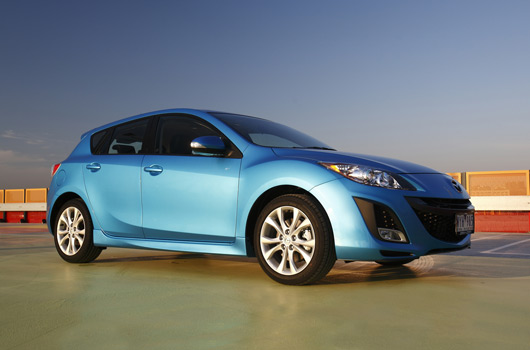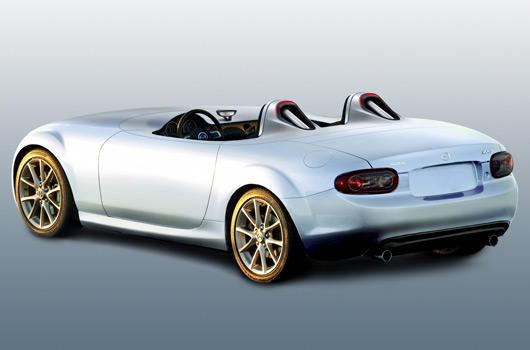
Australian pricing and specifications for the all new Mazda3 were released last week. The previous model was a roaring sales success for Mazda, it was the best selling car in the country in January, and one would expect the new 3 to keep Mazda near the top of the charts.
The range at launch is a four-prong lineup consisting of the Neo, Maxx, Maxx Sport and SP25. The hot-hatch hero Mazda3 MPS model will be launched in Australia in the second half of 2009.
Pricing for hatch and sedan models are identical and 6-speed equipped manuals start at $21,990 (Neo); $24,990 (Maxx); $27,690 (Maxx Sport); $30,690 (SP25). A 5-speed Activematic transmission is available for an extra $2060 (Neo and Maxx); $2260 (Maxx Sport and SP25).
Mazda were all too aware of the task at hand when making the new model. Program Manager for New Generation Mazda3, Yoshiyuki Maeda, said, “There was no mistaking the direction we had to take in developing the New Generation Mazda3. We wanted to exceed the expectations of customers all over the world again, just like the original Mazda3 has done.
“To achieve this we wanted to provide drivers with an exhilarating experience that they would sense directly whether they were driving the car, as a passenger or even simply looking at it.”
Which brings me to the exterior looks. After seeing the car at the Melbourne International Motor Show I concluded the car actually looks better in person than in photographs. After going through the images for this piece, I was reminded of this several times. I’ve no doubt the Mazda3 will find many fans of its visual language, however, I’m still to be won over by the somewhat cutesy pie looks. To be fair, it cuts a unique form in its segment, and that is most likely what the customers are looking for.
The Mazda3 is reasonably well specced with Dynamic Stability Control standard across the range, along with other usual acronyms including ABS and EBD, plus more. The press guff tells me that the Mazda3 is more efficient than the old model, but while the fuel consumption and emissions figures from the DOHC four cylinders in the range are respectable enough, they’re nothing too spectacular.
For example, the 6-speed manual 2.0 litre entry level Neo, with 108kW/182Nm, uses 7.9l/100km while emitting CO2 at 187g/km. The 2.5 litre SP25, with 122kW/227Nm, uses 8.6l/100km and emits 204g/km of CO2. Bump all figures up ever so slightly for the Activematic models. In contrast, the recently launched Volkswagen Golf VI, with three different engines available at time of writing, use 6.5l/100km of fuel or less with the highest CO2 emission figure being 150g/km.
A full suite of images and a brief press statement can be viewed after the jump. More detailed specs and pricing can be downloaded in the PDF below:








